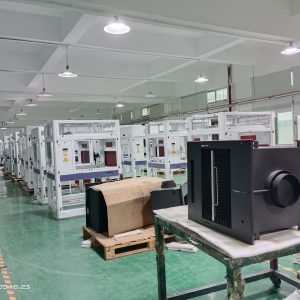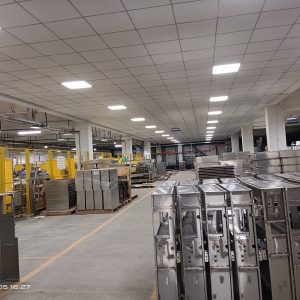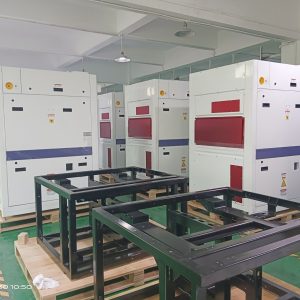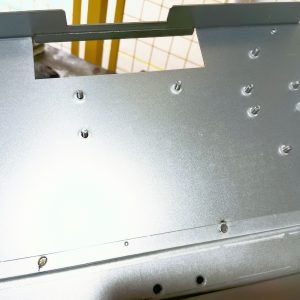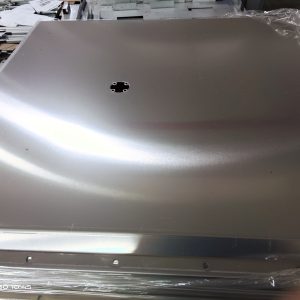Electroplating and e-coating (electrophoretic coating) are both surface finishing processes that involve the use of electric currents to apply a coating to a conductive substrate. However, they differ significantly in their methods, materials, and the types of coatings they produce. Here’s a comparison of the two processes:
Electroplating
1. Process:
- Electroplating involves depositing a thin layer of metal onto the surface of a conductive material using an electrochemical process. The object to be plated serves as the cathode (negative electrode) in an electrolyte solution containing metal ions, while a metal anode (positive electrode) is also present.
- When an electric current is applied, metal ions from the electrolyte are reduced onto the surface of the object, forming a metal coating.
2. Materials:
- The coating material in electroplating is typically a metal, such as gold, silver, nickel, copper, chrome, zinc, or others, depending on the desired properties of the final product.
- The choice of metal depends on factors like corrosion resistance, appearance, electrical conductivity, and other desired properties.
3. Applications:
- Electroplating is commonly used for decorative purposes (e.g., jewelry, coins, automotive trim), corrosion resistance (e.g., galvanized steel), electrical conductivity (e.g., connectors, circuit boards), and wear resistance (e.g., hard chrome plating).
4. Coating Characteristics:
- Electroplated coatings are usually metallic, offering good electrical conductivity and reflective properties.
- The thickness of the coating can be controlled, but it is generally thin, often in the range of micrometers.
E-Coating (Electrophoretic Coating)
1. Process:
- E-coating involves immersing the part in a water-based solution containing paint or polymer particles. The object serves as an electrode, and when an electric current is applied, the charged particles migrate to the surface of the object, creating a uniform coating.
- The coating is then cured in an oven, causing the particles to cross-link and form a hard, durable finish.
2. Materials:
- The coating material in e-coating is typically a polymer or paint, such as epoxy, acrylic, or other types of resins.
- E-coating can be used to apply a wide range of colors and finishes.
3. Applications:
- E-coating is widely used in the automotive industry for priming and finishing parts, as well as in appliances, metal furniture, and other products requiring a durable, corrosion-resistant finish.
- It provides excellent coverage, even on complex shapes and recessed areas.
4. Coating Characteristics:
- E-coated surfaces are typically non-metallic and non-conductive. The coatings can provide excellent corrosion resistance, aesthetic finishes, and can serve as a primer for further coatings.
- The coating thickness is usually in the range of 15 to 35 micrometers, depending on the application and desired properties.
Key Differences
- Nature of the Coating:
- Electroplating: Deposits a metallic layer.
- E-Coating: Applies a non-metallic, polymer-based coating.
- Purpose and Applications:
- Electroplating: Primarily used for decorative finishes, corrosion resistance, improved electrical conductivity, and wear resistance.
- E-Coating: Used for corrosion protection, priming, and decorative finishes, often with an emphasis on uniform coverage and durability.
- Thickness and Control:
- Electroplating: Generally results in thinner coatings, suitable for applications where a thin, conductive layer is needed.
- E-Coating: Typically produces thicker coatings, suitable for corrosion resistance and aesthetic purposes.
- Material Compatibility:
- Electroplating: Generally applied to conductive metals.
- E-Coating: Primarily applied to conductive substrates, but the coating itself is non-conductive.
Conclusion
Electroplating and e-coating are both valuable surface finishing techniques, each with its own advantages and specific applications. Electroplating is ideal for adding a thin metallic layer for decorative, protective, or conductive purposes, while e-coating is suited for providing a durable, corrosion-resistant finish with excellent coverage, especially as a primer or topcoat for painted products.
Related Links:
sheet metal fabrication company china | china sheet metal forming manufacturers | china sheet metal fabrication manufacturers | china custom sheet metal parts | china sheet metal fabrication companies | china sheet metal fabrication factory | sheet metal fabrication companies in china | sheet metal parts manufacturing china | china sheet metal parts manufacturers | china sheet metal parts company | china metal enclosure manufacturers | china aluminum sheet metal fabrication manufacturers | china sheet metal manufacturing manufacturers
